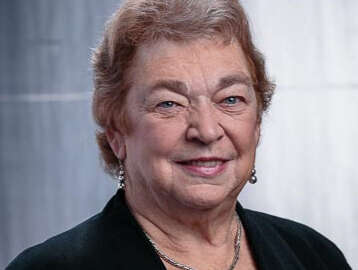
Navy opens ‘marketplace’ to help move itself into modern age of talent management
The Navy has long said it wants to replace its “industrial age” personnel processes with 21st century approaches to talent management.
The Navy has long said it wants to replace its “industrial age” personnel processes with 21st century approaches to talent management. But to achieve that, the service needs more information about the sailors in its ranks, and those sailors, in turn, need more information about opportunities throughout the Navy.
One of the key tools for accomplishing that two-way information flow finally came online in December after years of development. The new system, called MyNavy Assignment, replaces an older one called Career Management System-Interactive Detailing. Navy officials say it’s much more than a website redesign, and that it will “fundamentally change” the way enlisted sailors are picked for their next assignments.
“Heretofore, our assignments process has been a little static: it’s been about the needs of the Navy, and if we can make a match to the desires of the individual, that’s great,” said Rear Adm. Jeffrey Hughes, the commander of Navy Personnel Command. “But we’ve gotten better about process. We’re targeting that particular billet so that we have a better opportunity to match the talent to task at scale.”
Among the changes: via a new “resume” feature, service members can now add details about themselves that wouldn’t normally appear in their military service record, so that detailers can take those attributes into consideration when matching sailors with open jobs. And sailors can see a catalog of every position that’s expected to open up within the next 12 months, giving them a much broader view of what their opportunities might be.
Hughes said there’s good reason to believe that approach will let the Navy do a better job of staffing hard-to-fill billets, since it will also let the Navy advertise incentives to apply for those positions.
“Most people think about monetary incentives, but we have found through a lot of research that if you tell people, ‘We need you to go to a very hard warfighting job right now, but on the backside, we’d like to offer you this educational opportunity,’ we see people latch onto that,’” he said during an online event hosted by the national security professional association NatSecGirlSquad. “It’s a non-monetary incentive that’s going to help us in our marketplace, and we think there’s great merit there.”
Under the banner of a multi-year initiative called Sailor 2025, the Navy has had some successes modifying its own processes to make sailors’ career progression more individualized. Congress has helped by updating personnel laws in some areas, such as authorizing the Career Intermission Program that let service members take 2-3 year breaks in military service. Several hundred have taken advantage of that program, mostly to pursue educational opportunities.
Hughes said the COVID-19 pandemic served as something of a forcing function to help accelerate some of the process reforms the Navy has been working on for years.
“To be honest, I was concerned that not being able to bring large teams of people together in front of a whiteboard,” he said. “But we’re doing it via a virtual means, and we’re not only keeping up, I think we’re actually moving at a faster clip.”
But harnessing data to help guide personnel decisions remains a challenge, Hughes said. The Navy collects vast amounts of information about individual service members, but it’s not stored in one place.
“It’s not harmonized, it’s not an authoritative environment, it’s kind of all over the place,” he said. “We have gaps and seams in our ability to pull it all together to allow us to run these that are designed to do a lot of things, promotion boards and assignments at scale – hundreds of thousands of people. So we really need to harmonize both the process and IT and culture situation. We’re seeing some improvement, but the real world has gone to agile, and we’re trying to follow suit.”
Copyright © 2024 Federal News Network. All rights reserved. This website is not intended for users located within the European Economic Area.
Jared Serbu is deputy editor of Federal News Network and reports on the Defense Department’s contracting, legislative, workforce and IT issues.
Follow @jserbuWFED
Related Stories





